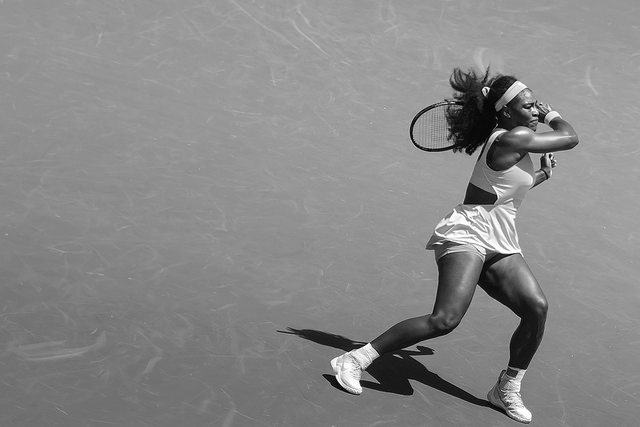Saturday was a historic day for tennis champion, Serena Williams.
Not only did she win her sixth Wimbledon title, but at 33 years old Williams now holds the title for oldest female winner ever.
Social media was a buzz with the news, and many from the famous to the ordinary voiced their enthusiasm about the win.
Harry Potter author J.K. Rowling was among them. However, not everyone was happy. When a Twitter troll chimed in claiming that Williams won because she is “built like a man,” Rowling posted the perfect comeback by putting up a picture of a glamorous-looking Williams in a red dress and rightfully calling the poster “an idiot.”
Like many, I cheered Rowling’s response.
However, try as I may, I couldn’t ignore that troll’s comment as just another person looking for a fight online. It was a sobering reminder of how far we still have to go as a society when it comes to female athletes.
As someone who follows Wimbledon every year, I am used to disparaging comments posted on various social media sites and chat-boards about Serena Williams and other players for not looking feminine enough for some.
“She’s a dude!” and “That’s a tranny!” and others along those lines are common.
Despite the fact that women’s sports are finally getting the respect they deserve (even though few women earn on par with their male counterparts) and despite the recent high that many are feeling over the recent World Cup win by the U.S. Women’s Soccer team, there is a still a stigma against women athletes if they happen to look strong.
While the 5’9″ Serena Williams is relatively average in height for a professional tennis player and indeed, she is practically petite when compared to her 6’1″ sister, Venus, and others, there is no denying her powerful physique.
Williams has muscles, and she is not afraid to show them off.
For some, like the person who responded to Rowling’s tweet, that display of power and strength makes her “masculine” and therefore unacceptable. All of her impressive professional accomplishments are ignored and instead, the focus is shifted to what she looks like.
Indeed, it seems the only thing worse than being a muscular female athlete is being a fat female athlete.
Case in point: an appearance last month at England’s Royal Ascot by professional equestrian (and Queen Elizabeth II’s granddaughter), Zara Phillips led to headlines like “Curse of the Mummy Tummy.”
Phillips was the the reigning Eventing World Champion from 2006- 2010 and won a silver medal at the 2012 summer Olympics but none of that was even mentioned in the articles and posts that came across my news feed.
Instead all the media could focus on was the size and shape of her abdomen. Even after Phillips issued a statement denying she was pregnant, speculation abounded that perhaps she suffered from diastasis recti as the result of having had her daughter 18 months ago or worse, maybe she had just “let herself go.”
For the record, she appeared fine to me and it looked like she had just enjoyed a good meal.
Still, my view was clearly in the minority. And the body criticism directed at Phillips didn’t end with that particular incident.
A few days ago at Wimbledon, she was criticism by some for wearing a pair of pants that supposedly “showed off her chunky legs.” Never mind that those muscular legs are probably a key asset for her success as an equestrian.
If they don’t look stylish in a particular pair of pants, then they are liability.
Plus, unlike the men, it seems that the criticism of female athlete’s bodies aren’t just limited to when they are actually participating in their respective sport but any time they step out in public.
As a woman and the mother of a young daughter, it all makes me rather sad.
We as a society need and deserve strong female role models especially in the area of sports where women remain under-represented.
By objectifying women’s bodies and rating them based on aesthetics alone, we are are doing everyone a disservice.
While “Fit is the new skinny” and “Strong is beautiful” are popular mantras, we need to show that is true by celebrating bodies that are muscular, strong and even display large muscles more closely associated with males.
Perhaps the answer lies in expanding the narrow definition of beauty.
As demonstrated in that photo J.K. Rowling posted of Serena Williams, a woman can be muscular, powerful and attractive all at the same time.
Sources: ESPN
The Daily Mail
Author: Kimberley Lo
Editor: Khara-Jade Warren
Image: Jimmy Baikovicius/ Flickr
Relephant:
7 Must-Dos for the Female Athlete.







Read 1 comment and reply